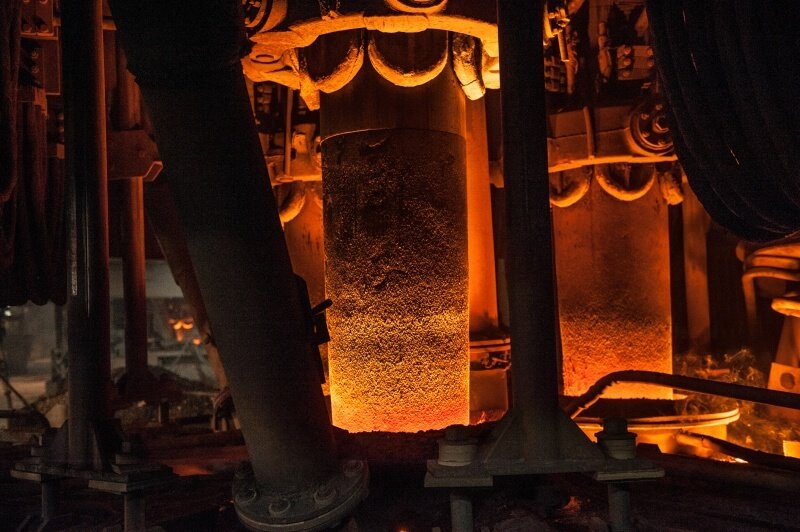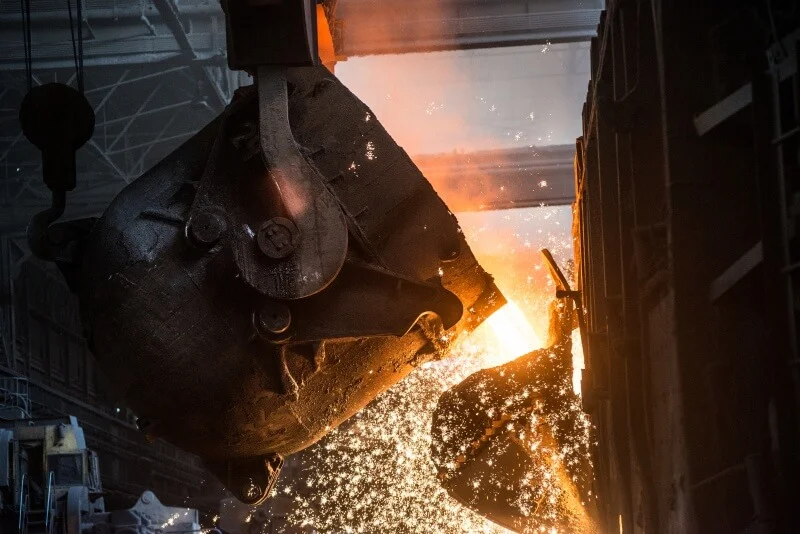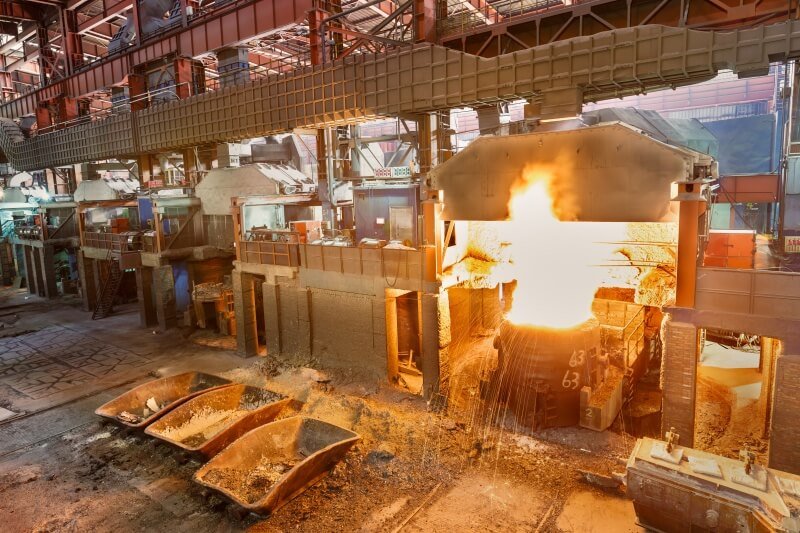Sourcing consistent, high-quality billets is hard—and failures are costly. One bad lot can damage dies, stall presses, and burn through labor and material. This guide demystifies the aluminum billet casting process, showing how billets are made, what defines their quality, and where they’re used, so you can buy smarter, secure your supply chain, and ship flawless parts.

The Foundational Aluminum Billet Casting Process
What are the primary raw materials?
Your journey to a quality billet begins with the right raw materials. You have two main options:
- Primary aluminum, derived from bauxite ore.
- Recycled aluminum scrap. Here’s the deal: this choice directly influences both the final billet’s purity and your procurement costs.
How does melting and alloying work?
Once selected, materials are melted in a furnace above 660°C. What does this mean for you? Alloying elements are added at this stage to achieve specific properties you need:
- Silicon enhances fluidity.
- Magnesium adds strength. This step is where your billet gets its unique chemical DNA, tailored for your application’s demands.
What defines the final casting stage?
The molten metal is then poured into molds to solidify into its final billet shape. This is where it gets interesting: the two main forms are:
- Cylindrical billets for extrusion.
- Rectangular billets for rolling. This final step locks in the billet’s initial form and internal structure. Key Takeaway: The final casting method determines the billet’s fundamental shape and internal grain structure, which is critical for all downstream processing.
| Casting Parameter | Description | Impact on Quality |
|---|---|---|
| Method | Pouring molten aluminum into molds or dies. | Defines initial shape and size. |
| Cooling Rate | Controlled cooling for uniform solidification. | Prevents internal stress and cracks. |
| Mold Type | Cylindrical or rectangular molds. | Determines the semi-finished form. |
This table neatly summarizes the critical parameters of the initial casting stage.
Optimizing the Aluminum Billet Casting Process
Why is controlled cooling critical?
After casting, the billet must cool in a controlled environment to solidify uniformly. But there’s a catch: improper cooling can ruin the metallurgical properties. This crucial step ensures:
- Structural integrity is preserved.
- The correct grain structure is formed. This prevents internal weaknesses that could cause failure under stress.
What defects can occur during casting?
Without precise control, several defects can compromise billet quality. You might be wondering what to look out for. Common issues include:
- Porosity: Tiny gas bubbles trapped inside.
- Cracks: Stress fractures from uneven cooling.
- Inclusions: Foreign particles in the metal. These defects can lead to weak points in your final product.
How is billet quality verified?
Rigorous testing is essential to ensure you receive a flawless product. But what’s the bottom line? Verification involves several key methods:
- Spectroscopy for chemical analysis.
- Ultrasonic testing for internal flaws. These non-negotiable checks guarantee the billet meets your exact specifications. Key Takeaway: Rigorous quality assurance, including ultrasonic testing and spectroscopy, is non-negotiable to guarantee a billet meets mechanical and chemical specifications.
| Testing Method | Purpose | What It Detects |
|---|---|---|
| Spectroscopy | Chemical Analysis | Verifies correct alloy composition. |
| Ultrasonic Testing | Internal Integrity | Detects internal cracks, voids, porosity. |
| Visual Inspection | Surface Quality | Identifies surface-level imperfections. |
This analysis confirms that a multi-faceted testing approach is essential for quality assurance.
How Applications Depend on the Aluminum Billet Casting Process
What is billet extrusion?
Extrusion is a common downstream process where a billet is heated and forced through a die. Here’s the deal: this process transforms a solid billet into complex profiles. Common products include:
- Structural beams.
- Window frames.
- Custom-shaped tubes and rods. The billet’s quality directly impacts the surface finish and integrity of the extruded part.
How are billets prepared for machining?
Billets are highly machinable, allowing for precise shaping into final components. What does this mean for you? Preparation involves several steps:
- Cutting the billet to a specific length.
- Drilling holes for assembly.
- Milling surfaces for a perfect fit. The alloy’s properties, set during casting, determine how easily it can be machined.
Are cast billets suitable for welding?
You might be wondering about weldability. Yes, but the alloy is key, as some are specifically designed for strong welds. For example:
- The 5xxx series offers excellent weldability.
- The 6xxx series is also highly weldable. The initial casting process determines the alloy composition and thus its suitability for welding. Key Takeaway: The alloy composition determined during the casting process dictates the billet’s weldability and the appropriate welding techniques to use.
| Downstream Process | Billet Requirement | Reason |
|---|---|---|
| Extrusion | Homogenized grain structure | Ensures smooth material flow and profile integrity. |
| Machining | High machinability rating | Allows for precise cutting without excessive tool wear. |
| Welding | Specific alloy (e.g., 6xxx series) | Guarantees strong, crack-free welds. |
This demonstrates that the initial casting decisions directly enable or limit downstream manufacturing options.
The Role of Alloying in the Aluminum Billet Casting Process
Why are alloys added to aluminum?
Pure aluminum is soft, so alloys are added during casting to enhance its properties. Here’s the deal: these additions are what give aluminum its versatility. They can improve:
- Strength and hardness.
- Corrosion resistance.
- Machinability and weldability. This customization makes it suitable for countless demanding applications.
What are the most common alloys?
Different alloy series offer distinct characteristics for specific end-uses. You’ll often encounter these common types:
- 6061: Versatile, with good strength and weldability.
- 6063: Ideal for architectural extrusion.
- 7075: Extremely high strength for aerospace. Choosing the right series is critical for your project’s success.
How does alloy choice affect final use?
What does this mean for you? The alloy you specify during casting directly determines the performance of your final product. For instance:
- A marine application demands a 5xxx series alloy for corrosion resistance.
- A high-stress aircraft part requires a 7xxx series alloy. This choice aligns the material’s properties with its real-world environment. Key Takeaway: Selecting the right alloy during the casting process is the most critical decision for aligning the material’s properties with the end product’s performance requirements.
| Alloy Series | Primary Elements | Key Characteristic | Common Use |
|---|---|---|---|
| 6xxx | Magnesium, Silicon | Good strength, weldability | Structural, Architectural |
| 7xxx | Zinc | Very high strength | Aerospace, Defense |
| 5xxx | Magnesium | Excellent corrosion resistance | Marine applications |
The table clearly links alloy composition to its intended industrial application.
Key Traits from the Aluminum Billet Casting Process
Why is aluminum so lightweight?
Aluminum’s low density gives it an exceptional strength-to-weight ratio. Ready for the good part? This means you can create strong, durable products that are also light. This is a game-changer for industries where weight matters, such as:
- Automotive manufacturing.
- Aerospace engineering. Lighter products improve fuel efficiency and reduce shipping costs.
How is corrosion resistance achieved?
When exposed to air, aluminum naturally forms a protective oxide layer on its surface. What does this mean for you? This passive layer acts as a shield against corrosion. It makes aluminum ideal for:
- Outdoor construction applications.
- Marine environments. This inherent resistance reduces maintenance costs and increases product lifespan.
What defines its conductivity?
Aluminum is an excellent conductor of both heat and electricity. Here’s the deal: this property is determined by its purity and alloy content set during casting. This makes it perfect for:
- Electrical wiring and components.
- Heat sinks in electronics. Its conductivity allows for efficient energy transfer and thermal management. Key Takeaway: The purity and alloy composition set during casting directly control thermal and electrical conductivity, making it suitable for heat sinks or electrical wiring.
| Characteristic | Scientific Principle | B2B Advantage |
|---|---|---|
| Lightweight | Low atomic mass/density | Reduced shipping costs, fuel efficiency in transport. |
| Corrosion Resistance | Passive oxide layer (Al₂O₃) | Increased product lifespan, low maintenance. |
| Conductivity | Free electrons in metallic lattice | Efficient heat dissipation and electrical transfer. |
These properties give your business a competitive advantage through improved performance and lower operational costs.
Meeting Needs with the Aluminum Billet Casting Process
How does the transport industry use billets?
The transportation sector relies on aluminum to reduce weight and improve fuel efficiency. Billets are processed into numerous components, including:
- Vehicle chassis and frames.
- Aerospace structural parts.
- Marine panels and hulls. Here’s the deal: the high strength-to-weight ratio is the main reason for its widespread use.
What is construction’s primary demand?
In construction, durability and corrosion resistance are paramount. You might be wondering where billets are used. They are extruded into:
- Window and door frames.
- Curtain wall systems.
- Structural and ornamental railings. Aluminum’s longevity makes it a cost-effective and low-maintenance choice for buildings.
Why is it vital for packaging?
The casting process ensures billets are free of impurities, which is essential for packaging. Here’s the real story: this purity makes it safe for direct contact with consumables. Key applications include:
- Beverage cans.
- Food containers and foils. Its non-toxic and recyclable nature makes it a perfect choice for the food and beverage industry. Key Takeaway: The casting process ensures billets are free of impurities, a critical requirement for food-grade packaging like beverage cans and foils.
| Industry | Key Application | Reason for Use |
|---|---|---|
| Transportation | Vehicle frames, aircraft parts | High strength-to-weight ratio. |
| Construction | Window frames, curtain walls | Durability and corrosion resistance. |
| Packaging | Beverage cans, food containers | Recyclability and non-toxicity. |
This shows how the inherent properties of aluminum make it indispensable across major global industries.
Economic Factors of the Aluminum Billet Casting Process
How do raw material costs influence price?
The final price of a billet is directly tied to the cost of its raw materials. Here’s the deal: fluctuations in the price of primary aluminum and scrap on markets like the LME are passed on to you. Key drivers include:
- Global supply and demand.
- Mining and refining costs. Monitoring these trends helps you anticipate price changes.
Does market demand shift pricing?
Absolutely. When demand from key sectors like automotive and construction surges, prices rise. But there’s a catch: a slowdown in these industries can lead to lower prices. Key indicators are:
- Major infrastructure projects.
- Automotive production forecasts. This economic relationship directly affects your procurement budget.
How do production costs factor in?
Energy is a massive component of production costs, especially for melting and casting. But here’s the kicker: this cost is a significant part of the final price you pay. Factors include:
- Local electricity and gas rates.
- The efficiency of the supplier’s furnace. Choosing an energy-efficient supplier can translate into cost savings for you. Key Takeaway: Energy costs for melting and casting are a significant component of the final price, making production efficiency a key cost driver.
| Cost Factor | Description | Impact on Final Price |
|---|---|---|
| Raw Materials | Price of primary aluminum and scrap. | Direct and significant impact. |
| Energy Costs | Electricity/gas for furnaces. | Major operational expense passed to buyer. |
| Alloy Composition | Cost of adding elements like copper or zinc. | High-performance alloys are more expensive. |
Understanding these cost drivers empowers you to make smarter purchasing decisions.
Sustainability in the Aluminum Billet Casting Process
Is aluminum infinitely recyclable?
Yes, aluminum can be recycled over and over again without any loss of quality. What does this mean for you? It creates a circular economy for the material. Benefits include:
- A more stable material supply.
- Reduced reliance on virgin resources. This makes aluminum one of the most sustainable materials available.
How is scrap used in casting?
Using scrap in the casting process is a well-defined and effective practice. The steps are straightforward:
- Sorting and cleaning the scrap.
- Melting it down in the furnace.
- Re-alloying to meet specifications. So what’s the bottom line? This process creates high-quality billets that are identical to those made from primary aluminum.
What is the energy impact of recycling?
The environmental benefits of recycling aluminum are enormous. So what’s the big picture? Using recycled scrap requires up to 95% less energy than producing new aluminum. This leads to:
- A significantly lower carbon footprint.
- Cost savings passed on to you. Choosing billets with recycled content is a win for both your budget and the planet. Key Takeaway: Using recycled scrap in the casting process requires up to 95% less energy than producing aluminum from bauxite ore, offering significant cost and environmental benefits.
| Sustainability Aspect | Detail | Benefit for B2B Buyers |
|---|---|---|
| Recyclability | Can be recycled without degradation. | Supports circular economy goals, stable supply. |
| Energy Savings | 95% less energy than primary production. | Lower costs for billets made from recycled content. |
| Scrap Utilization | Reduces need for virgin raw materials. | Lower carbon footprint for your final products. |
This highlights how sustainable practices in aluminum production deliver tangible business advantages.
Advanced Techniques in the Aluminum Billet Casting Process
What is direct chill (DC) casting?
Direct chill (DC) casting is a modern method where molten metal is rapidly cooled with water. Here’s the deal: this rapid solidification creates a superior internal structure. The main benefits are:
- A fine, uniform grain structure.
- Reduced risk of defects like cracks. This is the preferred method for producing high-quality billets for demanding applications like extrusion.
How does automation improve casting?
Automation plays a vital role in ensuring consistency and quality in the casting process. What does this mean for you? Automated systems monitor and control key variables in real-time. This includes:
- Furnace temperature.
- Casting speed and cooling rates.
- Quality monitoring through sensors. This technology guarantees that every billet is produced to the exact same high standard.
What are the future trends in casting?
The industry is constantly evolving to become more efficient and capable. So, what’s next? Future trends are focused on:
- Improving energy efficiency to lower costs.
- Developing new alloys with unique properties.
- Integrating AI for even more precise process control. These advancements will unlock new possibilities for your products. Key Takeaway: Future advancements focus on improving energy efficiency, incorporating more recycled content, and developing specialized alloys through advanced process controls.
| Technology | Description | Advantage |
|---|---|---|
| Direct Chill (DC) Casting | Molten metal is cooled by direct water contact. | Creates fine, uniform grain structure. |
| Process Automation | Computer-controlled monitoring of variables. | High consistency and repeatability. |
| Advanced Alloying | Introduction of novel elements for new properties. | Enables next-generation applications. |
These innovations ensure the aluminum casting process will continue to meet future industrial demands.
Choosing a Partner for Aluminum Billet Casting Process Needs
What supplier certifications matter?
When selecting a supplier, certifications provide an assurance of quality and consistency. You should look for internationally recognized standards. Key certifications include:
- ISO 9001: Guarantees a robust quality management system.
- Aerospace or automotive-specific approvals. Here’s the deal: these prove the supplier adheres to strict production protocols.
How should you evaluate a supplier?
Beyond certifications, you need to assess a supplier’s practical capabilities. What does this mean for you? A thorough evaluation should cover:
- Production capacity and lead times.
- In-house quality control processes.
- Supply chain reliability and transparency. This ensures they can meet your demands consistently and without disruption.
Why partner with a procurement expert?
Navigating the complexities of sourcing aluminum billets can be time-consuming. Let’s wrap this up: partnering with a procurement expert streamlines the entire process. A good partner provides:
- Access to a vetted network of suppliers.
- Expertise in negotiating competitive prices. This saves you time and ensures you get the best material for your needs. Key Takeaway: Partnering with a procurement expert ensures you get competitively priced, high-quality billets that meet your exact specifications without the hassle of managing multiple suppliers.
| Evaluation Criterion | Why It Matters | What to Look For |
|---|---|---|
| Quality Certifications | Guarantees adherence to standards. | ISO 9001, industry-specific approvals. |
| Technical Capability | Ensures they can produce your required alloy/size. | In-house metallurgists, advanced equipment. |
| Supply Chain Reliability | Avoids production delays. | Proven track record, transparent communication. |
This framework provides a clear roadmap for selecting the right supply partner for your business.
Conclusion
By understanding the aluminum billet casting process, you can now confidently specify your material needs, vet suppliers, and avoid the costly pitfalls of inconsistent quality. Our vision is to empower manufacturers by providing a seamless and reliable procurement platform for high-quality metals, ensuring your production lines run efficiently and your products exceed expectations.
Ready to secure a reliable supply of top-tier aluminum billets for your next project? Contact Precisionvast today for a competitive quote and expert consultation.
Frequently Asked Questions
1. Can I request a custom aluminum alloy for my billets? Yes, absolutely. Reputable suppliers can create custom alloys during the melting and alloying stage to meet specific mechanical or chemical properties required for your application.
2. How does using recycled scrap affect billet quality? It doesn’t compromise quality if processed correctly. When properly sorted, cleaned, and re-alloyed, recycled scrap produces billets with quality identical to those from primary aluminum, but with significant cost and environmental advantages.
3. How do I know which billet diameter is right for my project? The correct billet diameter depends on the size and specifications of your extrusion press and the final profile you intend to produce. An expert supplier or procurement partner can help you determine the optimal size for efficiency and performance.
4. What is homogenization and why is it important? It’s a crucial heat treatment process. Homogenization is applied after casting to evenly distribute the alloying elements within the billet, improving its extrudability and ensuring consistent properties in the final product.
5. Are billets supplied with surface treatments? Not typically. Billets are semi-finished products, and final surface treatments like anodizing or painting are applied after the billet has been extruded or machined into its final form.




